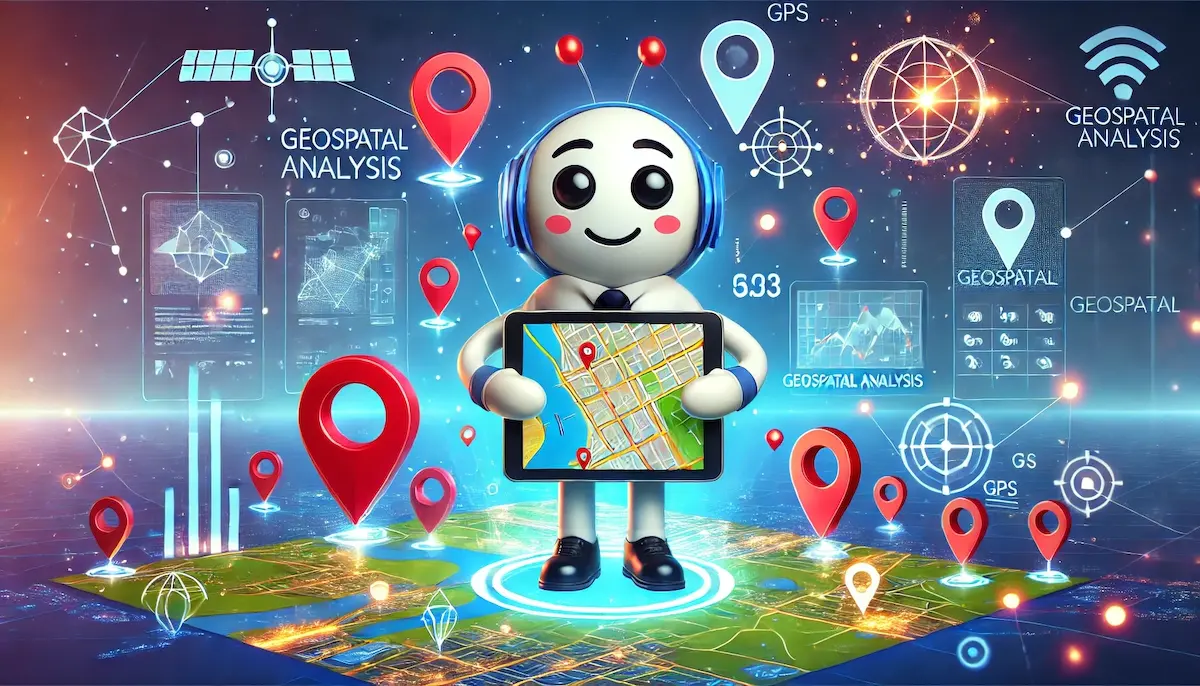In a world where location data plays a pivotal role in decision-making, geospatial analysis has emerged as a powerful tool for understanding and interpreting geographic information. This technology leverages spatial data to uncover patterns, relationships, and insights that can drive better decisions across various industries. From urban planning and environmental monitoring to marketing and logistics, geospatial analysis is transforming how we perceive and utilize location-based data.
What is Geospatial Analysis?
Geospatial analysis, also known as spatial analysis, is the process of collecting, processing, and analyzing geographic data to understand spatial relationships and patterns. This involves the use of Geographic Information Systems (GIS), remote sensing, and other spatial technologies to map, model, and visualize data in a spatial context. By integrating location data with other types of data, geospatial analysis provides a comprehensive view of the world, revealing insights that are not apparent through traditional data analysis methods.
Key Components of Geospatial Analysis
Geospatial analysis involves several key components and processes:
- Data Collection: Gathering geographic data from various sources, including satellite imagery, GPS, surveys, and sensors.
- Data Processing: Cleaning, transforming, and preparing the data for analysis. This may involve geocoding addresses, digitizing maps, and integrating different datasets.
- Spatial Analysis: Applying analytical techniques to examine spatial relationships, patterns, and trends. This can include distance calculations, clustering, heat mapping, and spatial interpolation.
- Modeling and Simulation: Creating spatial models to predict future trends, simulate scenarios, and assess the impact of different variables.
- Visualization: Presenting the results of the analysis through maps, graphs, and interactive dashboards, making it easier to interpret and communicate findings.
Benefits of Geospatial Analysis
Implementing geospatial analysis offers numerous advantages:
- Enhanced Decision-Making: Provides a spatial perspective that can reveal hidden patterns and relationships, leading to more informed and effective decisions.
- Improved Planning and Management: Facilitates better planning and resource management by providing detailed geographic insights.
- Risk Assessment: Helps identify and mitigate risks by analyzing spatial data related to natural disasters, crime, and other hazards.
- Operational Efficiency: Optimizes operations by analyzing location-based data to improve logistics, supply chain management, and asset tracking.
- Market Insights: Offers valuable market insights by analyzing customer locations, demographics, and behaviors, enabling targeted marketing strategies.
Use Cases for Geospatial Analysis
Geospatial analysis can be applied across various industries and scenarios:
- Urban Planning: Analyzing land use, population density, and infrastructure to support sustainable urban development and zoning decisions.
- Environmental Monitoring: Tracking changes in land cover, deforestation, and pollution to support environmental conservation and policy-making.
- Disaster Management: Assessing vulnerability and impact areas for natural disasters such as earthquakes, floods, and hurricanes, aiding in preparedness and response.
- Healthcare: Mapping disease outbreaks, healthcare facility locations, and demographic data to improve public health planning and resource allocation.
- Retail and Marketing: Analyzing customer locations, foot traffic, and market demographics to optimize store locations, marketing campaigns, and product offerings.
- Transportation and Logistics: Improving route planning, traffic management, and delivery efficiency by analyzing transportation networks and travel patterns.
Implementing Geospatial Analysis
To successfully implement geospatial analysis, organizations should consider the following steps:
- Define Objectives: Clearly outline the goals and use cases for geospatial analysis, such as improving urban planning or optimizing logistics.
- Collect and Integrate Data: Gather relevant geographic data from multiple sources and integrate it with other types of data to provide a comprehensive view.
- Choose the Right Tools: Select appropriate GIS software and analytical tools that meet your needs and integrate well with your existing systems.
- Conduct Spatial Analysis: Apply spatial analysis techniques to uncover patterns, relationships, and insights from the data.
- Visualize and Communicate Findings: Use maps, graphs, and interactive dashboards to present the results, making it easier to interpret and communicate findings to stakeholders.
- Monitor and Refine: Continuously monitor the effectiveness of the analysis, gather feedback, and make necessary adjustments to improve accuracy and relevance.
Conclusion
Geospatial analysis is a transformative technology that enhances decision-making, planning, and management by providing valuable geographic insights. By leveraging GIS, remote sensing, and spatial analysis techniques, organizations can uncover patterns and relationships that drive better decisions and optimize operations.
Blockfine thanks you for reading and hopes you found this article helpful.
